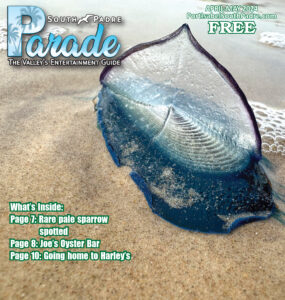By STEVE HATHCOCK
Special to the PRESS
Back in 2007 I bought a canvas bag full of pennies from a man who had accumulated them over the past couple of decades. He tried to exchange them for currency at his bank but was told that large amounts of coins had to be in rolls in order for the bank to accept them. He told me that his intention was just to cash them in so he would happily sell them to me at face value. We did a quick estimate and I presented him with $90. Eagerly I spilled the coins unto the counter where Kay and I began a cursory search for wheat pennies. (Those minted from 1910-1959)
There were plenty of “wheaties” with the oldest being a well worn specimen from 1910.
“What this?” Kay asked as she handed me a silver colored coin.
Taking on the tone of a professor I peered closely at her find and began to explain:
“Due to wartime demand for copper for use in ammunition and other military equipment during World War II the United States Mint experimented with several different substitutes to replace the bronze alloy used to date.
But problems soon developed. The composition of the new alloy, which was 99 percent steel with a layer of galvanized zinc, produced a coin that was silver in color, magnetic and 13 percent lighter. Freshly minted pennies were often mistaken for dimes while magnets inside vending machines which readily accepted copper coins could not differentiate between steel slugs and the new pennies and rejected both causing the new penny to earn the nick name “Steelies.”
In addition, the galvanization process didn’t cover the edges of the coins which allowed the new steel coin to quickly rust. Undeterred, the mint tried using salvaged brass shell casings with a measure of pure copper to produce an alloy close to the pre-war composition. This was used for 1944–46-dated cents, after which the prewar composition was resumed. Although they continued to circulate into the 1960s, the mint collected large numbers of the 1943 cents and destroyed them.
In today’s market, a circulated “steelie” will bring about 25 cents. Those in extra fine and uncirculated condition will command anywhere from a dollar to five or six dollars a coin. However, as in any other issue, those specimens in superb condition with sharp details and an unblemished surface can bring a much higher price.”
About then I heard the back door swish shut….Kay?
Oh well……….I guess she will have to wait until another time to get her 2 cents worth!
Want the whole story? Pick up a copy of the Port Isabel-South Padre Press, or subscribe to our E-Edition by clicking here.



Comments